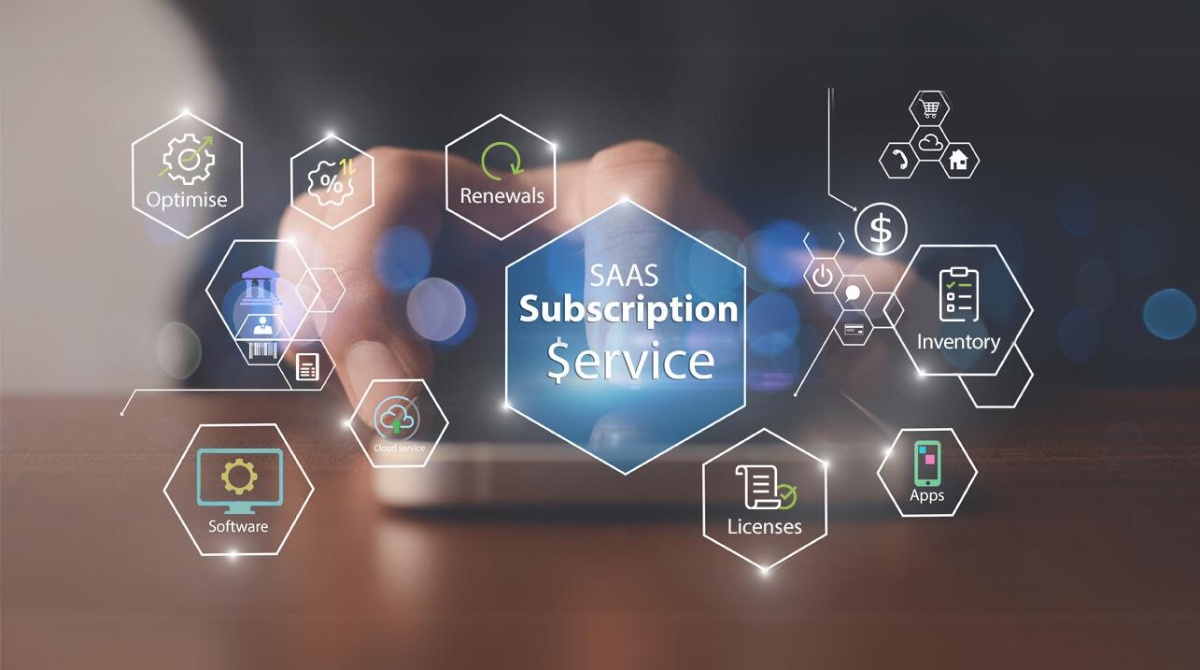Introduction
Welcome to the world of Software-as-a-Service (SaaS) contracts! As businesses continue to embrace cloud-based solutions for their software needs, negotiating SaaS contracts has become an essential part of any organization’s operations. Whether you’re a small startup or a large enterprise, understanding the nuances of SaaS contracts and effectively negotiating their terms is crucial for maximizing the benefits of these services while minimizing potential risks.
In this article, we will guide you through the process of negotiating SaaS contracts, helping you navigate the intricacies of these agreements with confidence and clarity. We will explore key terms and conditions that you should be aware of, such as the scope of the service, pricing and payment terms, service level agreements (SLAs), data security and privacy, intellectual property rights, termination and renewal, change requests and customizations, support and maintenance, and legal compliance.
By gaining a deep understanding of these topics and learning effective negotiation strategies, you will be better equipped to secure a contract that aligns with your organization’s needs and goals. Whether you’re negotiating with a SaaS provider for the first time or looking to renegotiate an existing contract, the insights shared in this article will empower you to make informed decisions and achieve favorable outcomes.
It’s important to note that every SaaS contract is unique, and the specific terms and conditions may vary depending on the provider and the services offered. However, the concepts and principles discussed in this article will provide you with a solid foundation for successful negotiations, allowing you to confidently engage in discussions and advocate for your organization’s best interests.
So, let’s dive in and explore the fascinating world of negotiating SaaS contracts. By the end of this article, you’ll have a comprehensive understanding of the process and the tools you need to drive successful negotiations and secure mutually beneficial agreements.
Understanding the Basics of SaaS Contracts
Before delving into the negotiation process, it’s essential to have a clear understanding of the basics of SaaS contracts. A SaaS contract is a legally binding agreement between a SaaS provider and a customer that outlines the terms and conditions of the service being provided. Unlike traditional software licenses, where the customer purchases and installs software on their own servers, SaaS contracts grant the customer access to the provider’s software applications and infrastructure via the cloud.
One key aspect of SaaS contracts is the subscription-based pricing model. Customers typically pay a recurring fee to access the SaaS platform rather than purchasing the software outright. This model offers several advantages, including cost savings, scalability, and continuous software updates and maintenance by the provider.
Another crucial element to consider is the service level agreement (SLA). The SLA outlines the level of service and support that the SaaS provider guarantees to the customer. It includes metrics such as uptime, response time, and resolution time for issues. Understanding the SLA is essential to ensure that the provider meets the customer’s expectations and maintains a high level of service quality.
Data security and privacy are also critical considerations in SaaS contracts. Customers must ensure that the provider has robust security measures in place to protect their sensitive data. This includes encryption, access controls, data backups, and compliance with relevant data protection regulations, such as GDPR or HIPAA. Clear provisions outlining data ownership, confidentiality, and breach notification should be included in the contract to protect the customer’s interests.
Finally, SaaS contracts often address intellectual property rights. It’s important to understand which party retains ownership of the software, and whether the customer has any rights to modify or customize the software. Additionally, the contract should address any potential conflicts regarding intellectual property infringement or misuse.
By grasping and familiarizing yourself with these fundamental aspects of SaaS contracts, you will be better equipped to engage in negotiations. In the next sections, we will explore strategies for effectively negotiating the key terms and conditions of a SaaS contract, empowering you to create a mutually beneficial agreement. Remember, a well-negotiated contract sets the stage for a successful long-term partnership with your SaaS provider.
Identifying Key Terms and Conditions
As you begin the negotiation process for a SaaS contract, it’s important to identify and understand the key terms and conditions that will shape the agreement. These terms will vary depending on the specific needs of your organization, but certain clauses are commonly found in most SaaS contracts.
One crucial term to consider is the scope of the service. Clearly defining the functionalities, features, and limitations of the SaaS platform is essential to avoid any misunderstandings or unmet expectations. Ensure that the contract aligns with your organization’s requirements and that the provider can deliver the services you need.
Pricing and payment terms are also critical factors in SaaS contracts. Understand the pricing structure, including any additional costs such as data storage or user licensing fees. Determine whether the contract allows for scalability and flexibility in adjusting the subscription fees as your organization’s needs change over time.
Service level agreements (SLAs) outline the level of service and support that the provider guarantees. Pay close attention to uptime guarantees, response times for resolving issues, and any penalties for not meeting the agreed-upon SLAs. Negotiate SLAs that align with your organization’s requirements and prioritize critical aspects of your business operations.
Data security and privacy provisions should be carefully evaluated in a SaaS contract. Ensure that the provider has appropriate security measures in place to protect your data from unauthorized access or breaches. Consider contract clauses that outline data ownership, confidentiality agreements, and protocols for handling data breaches or incidents.
Another important aspect is intellectual property rights. Clarify who retains ownership of the software and whether your organization will have any rights to modify or customize it. Address any potential conflicts related to intellectual property infringement, and negotiate terms that protect your organization’s interests.
Termination and renewal terms should be clearly defined in the contract. Understand the notice period required for termination and whether there are any penalties or fees associated with early termination. Additionally, evaluate the renewal terms and negotiate favorable conditions that align with your organization’s long-term goals.
By identifying these key terms and conditions, you will be equipped to negotiate a SaaS contract that meets your organization’s specific needs and requirements. In the next sections, we will delve deeper into each of these areas and explore effective strategies for negotiation. Remember, a well-negotiated contract ensures a solid foundation for a successful partnership with your SaaS provider.
Establishing the Scope of the Service
When negotiating a SaaS contract, it’s crucial to establish a clear and comprehensive understanding of the scope of the service being provided. This includes defining the functionalities, features, and limitations of the SaaS platform to ensure that it aligns with your organization’s needs and expectations.
Begin by identifying the specific services and applications that the SaaS provider will offer. Clearly outline the core functionalities and any additional features that are essential for your business operations. This will help you assess whether the SaaS platform can meet your requirements effectively.
Consider your organization’s growth plans and future needs. Ensure that the scope of the service allows for scalability, allowing you to add or remove users, increase data storage capacity, or integrate with other systems as your business expands.
Evaluate any limitations or restrictions imposed by the SaaS provider. Are there any usage caps or bandwidth restrictions? Are there any limitations on the number of customizations or integrations allowed? Understanding these limitations will help you assess whether the SaaS platform can accommodate your organization’s requirements.
In addition, it’s important to discuss the provider’s responsibilities regarding software updates, maintenance, and technical support. Clarify how frequently updates will be deployed and how they will be communicated to your organization. Understand the provider’s support processes and response times for resolving issues or addressing concerns.
During the negotiation process, consider any special requirements or unique needs that your organization may have. Discuss these requirements with the SaaS provider and ensure that they are incorporated into the scope of the service. This could include specific data security measures, industry-specific compliance requirements, or custom integrations with other software systems.
By establishing a clear understanding of the scope of the service, you can set the stage for a successful partnership with the SaaS provider. It ensures that both parties are on the same page regarding the functionalities, features, and limitations of the SaaS platform. This clarity helps avoid potential misunderstandings or unmet expectations down the line.
In the next sections, we will continue on the negotiation journey, exploring effective strategies for evaluating pricing and payment terms, negotiating service level agreements (SLAs), and addressing data security and privacy concerns. By mastering the negotiation process, you can secure a beneficial SaaS contract that meets your organization’s needs and drives your business forward.
Evaluating Pricing and Payment Terms
Pricing and payment terms are critical aspects of any SaaS contract negotiation. Understanding the pricing structure and ensuring that it aligns with your organization’s budget and needs is vital for establishing a successful partnership with the SaaS provider.
Start by evaluating the pricing model offered by the SaaS provider. Determine whether they use a subscription-based pricing model, where you pay a recurring fee based on usage or a fixed fee model. Assess which pricing model offers the most flexibility and cost-effectiveness for your organization.
Consider any additional costs beyond the base subscription fee. This could include fees for additional user licenses, data storage, or specific features or modules. Ensure that you have a clear understanding of these additional costs and evaluate whether they fit within your budget.
Negotiate pricing terms that align with the growth plans and scalability of your organization. If you anticipate an increase in the number of users or data storage capacity, discuss how the pricing model accommodates these changes. Explore whether the provider offers discounts or incentives for long-term commitments or volume usage.
Address any potential price increases over time. Request details on how often and by what percentage the provider may adjust the pricing. Understand the notice period for price adjustments and negotiate terms that provide transparency and reasonable adjustment limits.
Payment terms should also be carefully evaluated. Determine the frequency of payments, such as monthly or annually, and assess the provider’s preferred payment methods. Consider any late payment penalties or fees and ensure that they are reasonable and align with your organization’s payment processes.
Discuss any potential flexibility in payment terms that you may require. For example, if your organization experiences seasonal fluctuations in cash flow, explore whether the provider offers payment deferrals or payment plans to accommodate these fluctuations.
In addition to pricing and payment terms, consider the provider’s policies regarding contract renewals and termination. Evaluate whether there are any penalties or fees associated with early termination and ensure that the renewal terms align with your organization’s long-term goals.
By carefully evaluating pricing and payment terms, you can negotiate a SaaS contract that meets your organization’s budget and financial objectives. In the next sections, we will explore strategies for negotiating service level agreements (SLAs), addressing data security and privacy concerns, and managing intellectual property rights. A well-negotiated contract ensures a mutually beneficial partnership with the SaaS provider and sets the stage for long-term success.
Negotiating Service Level Agreements (SLAs)
Service Level Agreements (SLAs) are an essential component of a SaaS contract as they define the level of service and support that the provider guarantees to the customer. Negotiating SLAs that align with your organization’s needs and expectations is crucial for ensuring a satisfactory and reliable service experience.
Start by identifying the key performance indicators (KPIs) that are important for your organization. These could include metrics such as uptime, response time for resolving issues, and the availability of customer support. Clearly define your expectations and include these metrics in the SLA.
Determine the level of support that the provider will offer. This could include options such as 24/7 customer support, dedicated account managers, or access to a knowledge base or self-help resources. Evaluate your organization’s support requirements and negotiate a suitable level of support based on those needs.
Discuss how the provider will communicate service outages or incidents. Understand their notification processes and ensure that they align with your organization’s needs. Negotiate clear expectations for communication and updates during service disruptions.
Penalties or remedies for not meeting SLAs should also be addressed during the negotiation process. Determine whether the provider offers any service credits or financial compensation if they fail to meet the agreed-upon performance metrics. Negotiate reasonable and fair penalties that incentivize the provider to maintain a high level of service quality.
Consider the provider’s track record and reputation for meeting SLAs. Request references or case studies to gauge their performance history. Establish a mutual understanding of the provider’s historical performance and set realistic expectations for ongoing service levels.
It’s important to ensure that the SLA is clear, concise, and unambiguous. Avoid any vague language or subjective terms that may lead to confusion or disputes. Clearly define the metrics, the calculation methods, and the reporting mechanisms in the SLA to avoid any misunderstandings.
Regularly review and monitor the SLA during the duration of the contract to ensure that the provider consistently meets the agreed-upon performance metrics. Conduct periodic reviews and discuss any necessary adjustments or improvements to the SLA.
By effectively negotiating the service level agreements, you can establish a solid foundation for a successful partnership with the SaaS provider. In the next sections, we will explore strategies for ensuring data security and privacy, addressing intellectual property rights, and managing contract termination and renewal. Remember, a well-negotiated contract sets the stage for a mutually beneficial and reliable SaaS service experience.
Ensuring Data Security and Privacy
Data security and privacy are crucial factors to consider when negotiating a SaaS contract. In an increasingly digital world, protecting sensitive data and ensuring compliance with relevant privacy regulations are top priorities for organizations. Here are some key considerations to ensure data security and privacy in your SaaS contract negotiation.
Start by assessing the security measures implemented by the SaaS provider. Inquire about their data encryption protocols, access controls, and physical security controls at their data centers. Understand their disaster recovery and business continuity plans to ensure your data is protected in case of any unexpected events or disasters.
Review the provider’s compliance with industry standards and regulations. Depending on your organization’s industry, ensure the provider adheres to relevant standards such as GDPR, HIPAA, or ISO 27001. Request documentation or certifications that demonstrate their commitment to data security and compliance with these standards.
Address the issue of data ownership and confidentiality in the contract. Clearly define who owns the data that is stored or processed by the SaaS provider. Additionally, include provisions that protect the confidentiality of your data and restrict the provider from sharing or selling it to third parties without your explicit consent.
Discuss the provider’s data handling practices and data access controls. Understand who has access to your data within the provider’s organization and ensure that there are appropriate controls in place to prevent unauthorized access. Additionally, request information about the provider’s employee background checks and training programs to ensure the security of your data.
Include clauses in the contract regarding data breach notification and incident response. Define the provider’s obligations in the event of a data breach and the timeline for notifying your organization. Specify the procedures for investigating and remedying any security incidents and outline the responsibilities of both parties.
Evaluate the provider’s data backup and recovery practices. Ensure that they regularly back up your data and have mechanisms in place to restore it in case of data loss or system failures. Discuss the retention period for backups and specify your organization’s data retention requirements.
Consider the geographical locations where your data will be stored or processed. If your organization is subject to specific data residency requirements or restrictions, ensure that the provider complies with these requirements and that data will not be stored or processed in unauthorized locations.
Finally, consider conducting a third-party security assessment or audit of the provider’s infrastructure and security practices. This can provide an independent evaluation of the provider’s security controls and validate their claims regarding data security and privacy.
By addressing these considerations and negotiating comprehensive data security and privacy provisions, you can ensure the protection of your organization’s sensitive information. In the next sections, we will explore strategies for addressing intellectual property rights, managing contract termination and renewal, and negotiating support and maintenance terms. Protecting your data is a critical step in establishing a successful and secure partnership with the SaaS provider.
Addressing Intellectual Property Rights
When negotiating a SaaS contract, it is crucial to address the intellectual property rights to protect your organization’s interests and ensure compliance with relevant laws and regulations. Here are some key considerations when addressing intellectual property (IP) rights in a SaaS contract.
Start by clarifying the ownership of the software and any other intellectual property involved in the SaaS platform. Determine whether the provider retains full ownership or if there are any specific licensing agreements in place. Understand the implications of the ownership structure on your organization’s usage and customization rights.
Evaluate the extent to which you can modify or customize the software. Identify any limitations or restrictions imposed by the provider on customization, and negotiate terms that allow for the flexibility you require. Ensure that the contract clearly outlines your rights to modify or extend the functionality of the software.
Consider whether the contract includes any restrictions on reverse engineering or decompiling the software. Understand the implications of these restrictions on your organization’s ability to understand or modify the underlying code. If necessary, negotiate provisions that enable your organization to access and modify the code for development purposes.
Discuss the intellectual property rights related to any customizations or enhancements developed by your organization. Ensure that the contract specifies your ownership of any new IP created during the customization process. Determine whether the provider has any rights or claims on these customizations and negotiate terms that protect your ownership rights.
Evaluate any intellectual property infringement claims or indemnification clauses in the contract. Ensure that the provider takes responsibility for any infringement of third-party intellectual property rights resulting from the use of their software. Clarify the process for resolving such claims and negotiate terms that minimize your organization’s liability.
Consider the ownership and use of data processed or stored within the SaaS platform. Establish clear provisions on data ownership and usage rights. Specify that the provider has no ownership claims over your organization’s data and that they cannot use it for any purpose without your explicit consent.
Address any confidentiality obligations regarding the provider’s use or disclosure of your organization’s data. Include robust confidentiality clauses to protect your sensitive and proprietary information. Ensure that the provider is contractually bound to maintain the confidentiality of your data, both during the term of the contract and after its termination.
It is crucial to consult with legal experts specializing in intellectual property rights when negotiating a SaaS contract. They can provide guidance and ensure that the contract adequately protects your organization’s intellectual property interests.
By addressing these considerations and negotiating clear intellectual property rights provisions, you can protect your organization’s IP and ensure that the contract aligns with your ownership rights and usage needs. In the next sections, we will explore strategies for managing contract termination and renewal, negotiating support and maintenance terms, and reviewing the contract for legal compliance. Protecting your intellectual property is vital for establishing a successful and secure partnership with the SaaS provider.
Handling Termination and Renewal
When negotiating a SaaS contract, it is essential to address the terms and conditions related to contract termination and renewal. These provisions ensure that both parties have clarity and protection in the event of contract modifications, expirations, or terminations.
Start by clarifying the duration of the initial contract term. Determine whether it is a fixed-term contract or an open-ended agreement. Fixed-term contracts typically have a predetermined length, while open-ended agreements may have a rolling or month-to-month renewal basis.
Negotiate the notice period required for termination. Determine how much advance notice must be given by either party to terminate the contract. Ensure that the notice period is reasonable and provides ample time to transition from the SaaS platform to an alternative solution if necessary.
Discuss any penalties or fees associated with early termination. Understand under what circumstances these penalties may apply, such as breach of contract or failure to fulfill obligations. Negotiate fair and reasonable early termination fees that align with your organization’s needs and circumstances.
Evaluate the automatic renewal provisions in the contract. Determine whether the contract automatically renews at the end of the initial term or subsequent renewal periods. Discuss the terms under which automatic renewal can be triggered and negotiate the option to opt out of automatic renewal if desired.
Assess the renewal terms, including any potential changes to pricing, service levels, or other key contractual terms. Understand the process for renegotiating these terms upon renewal and ensure that they align with your organization’s evolving needs and objectives.
Include provisions for contract modifications or amendments during the term. Clarify the process for discussing and proposing changes to the contract and negotiate reasonable procedures for approving such modifications. Ensure that any modifications are documented and agreed upon in writing by both parties.
In the event of contract termination, discuss the data extraction and transition process. Determine how your data will be returned to you or transferred to another provider. Ensure that the contract specifies the format, timeframe, and assistance provided by the SaaS provider in transitioning your data to a new solution.
Consider options for extending or renewing the contract beyond the initial term. Discuss the possibility of negotiated renewal pricing, revised terms, or additional services. Evaluate the terms for multiple renewal periods and negotiate the option to revisit the agreement at the end of each term.
Consult legal experts to ensure that the termination and renewal provisions in the contract comply with applicable laws and regulations. They can provide guidance on potential risks and ensure that your organization’s interests are protected.
By addressing these considerations and negotiating well-defined termination and renewal provisions, you can establish a contract that provides security and flexibility for both parties. In the next sections, we will explore strategies for negotiating support and maintenance terms, reviewing the contract for legal compliance, and concluding successful SaaS contract negotiations.
Managing Change Requests and Customizations
When entering into a SaaS contract, it is crucial to address change requests and customizations to ensure the SaaS platform aligns with your organization’s specific needs. Managing these requests effectively can lead to a tailored solution that maximizes the value of the SaaS service.
Start by clearly defining the change request process in the contract. Establish the procedures and channels for submitting change requests, including the necessary documentation or details required for evaluation. Ensure that the provider has a formalized and structured process in place to manage change requests.
Evaluate the provider’s policy regarding customizations. Understand what level of customization is allowed and assess any limitations or restrictions imposed by the provider. Determine the cost and effort associated with customizations and negotiate terms that align with your organization’s requirements and the provider’s capabilities.
Consider the impact of change requests and customizations on implementation timelines and project milestones. Discuss with the provider any potential delays or adjustments that may arise from fulfilling these requests. Negotiate realistic timelines that take into account the complexity and effort required for the requested changes or customizations.
Assess the provider’s technical expertise and resources for managing change requests and customizations. Evaluate their ability to understand and implement requested changes effectively. Consider their experience in handling similar customization projects and request references or case studies if necessary.
Negotiate the pricing and additional costs associated with change requests and customizations. Understand how the provider charges for these services, whether on an hourly basis, through fixed project fees, or on a case-by-case basis. Ensure that the pricing model is transparent and reasonable, and aligns with the value delivered by the requested changes or customizations.
Ensure that the contract specifies the ownership of customizations and any new intellectual property created during the customization process. Clarify the rights and usage restrictions associated with the customizations. Protect your organization’s ownership rights and negotiate terms that prevent the provider from utilizing customizations for other clients without your consent.
Consider the ongoing maintenance and support of customizations. Discuss how the provider will handle updates, bug fixes, and compatibility issues related to customizations. Assess whether additional support or maintenance charges are applicable for customizations and negotiate terms that provide clarity and fair treatment.
By effectively managing change requests and customizations, you can optimize the SaaS platform to meet your organization’s specific needs. In the next sections, we will explore strategies for negotiating support and maintenance terms, reviewing the contract for legal compliance, and concluding successful SaaS contract negotiations. Effective management of change requests and customizations ensures a tailored solution that drives your organization’s success.
Negotiating Support and Maintenance
When negotiating a SaaS contract, it is essential to address the terms and conditions related to support and maintenance. A robust support and maintenance agreement ensures that you receive the necessary assistance to maximize the benefits of the SaaS service and address any issues that may arise.
Start by evaluating the support options provided by the SaaS provider. Understand the availability of customer support, including hours of operation and response times. Determine whether the provider offers different levels of support, such as 24/7 support or dedicated account managers, and negotiate a level of support that aligns with your organization’s needs.
Clarify the channels of communication for accessing support. Determine whether support is provided through email, phone, or an online ticketing system. Discuss how issues will be escalated and resolved based on their urgency or severity.
Evaluate the provider’s track record in resolving support cases. Request information on average response times and resolution times for different types of issues. Understand the provider’s process for tracking and managing support requests and ensure that it aligns with your expectations for timely and effective support.
Address the provider’s responsibilities for software maintenance and updates. Understand the frequency of software updates and how they will be communicated to your organization. Discuss the provider’s process for addressing bugs, vulnerabilities, and compatibility issues, and negotiate reasonable timelines and expectations regarding patching and fixes.
Determine the provider’s system availability and uptime commitments. Discuss the agreed-upon uptime percentage and any potential penalties or service credits for not meeting these commitments. Negotiate terms that ensure a high level of system availability, especially if your organization relies heavily on the SaaS platform for day-to-day operations.
Consider the provider’s disaster recovery and business continuity plans. Understand how they handle data backups, replication, and failover measures. Assess the provider’s ability to restore services in the event of a system failure or other disruptions, and ensure that their plans align with your organization’s requirements for data integrity and availability.
Evaluate any additional charges or fees associated with support and maintenance. Understand whether there are any limits on the number of support requests or the level of assistance provided. Negotiate terms that provide clarity on additional costs and ensure that they are reasonable and aligned with the value delivered by the support and maintenance services.
Request references from existing customers to assess their satisfaction with the support and maintenance services provided by the SaaS provider. Understanding their experiences can give you insights into the level of support and responsiveness you can expect from the provider.
By effectively negotiating support and maintenance terms, you can ensure that your organization receives prompt and reliable assistance. In the next sections, we will explore strategies for reviewing the contract for legal compliance, concluding successful SaaS contract negotiations, and implementing the contract to maximize its value. A well-negotiated support and maintenance agreement is crucial for a positive and productive partnership with the SaaS provider.
Reviewing the Contract for Legal Compliance
When negotiating a SaaS contract, it is crucial to thoroughly review the contract for legal compliance to protect your organization’s rights and ensure adherence to applicable laws and regulations. Reviewing the contract with legal experts can help identify and address any potential legal risks before entering into the agreement. Here are some key considerations when reviewing a SaaS contract for legal compliance.
Evaluate the governing law and jurisdiction clause in the contract. This clause determines which laws will apply and which courts will have jurisdiction in the event of a legal dispute. Ensure that the chosen governing law aligns with your organization’s preferences and that the jurisdiction is appropriate and practical.
Assess any limitations of liability clauses in the contract. These clauses specify the extent of liability that each party assumes in case of breach or damages. Ensure that the limitations of liability are reasonable and fair, and that they do not excessively limit your organization’s rights or protect the provider from significant responsibilities.
Evaluate any indemnification clauses included in the contract. Indemnification clauses outline the obligations of each party to defend and compensate the other party for any third-party claims arising from the contract. Ensure that the indemnification clauses properly allocate liabilities and risk, and that they align with your organization’s risk tolerance.
Consider any confidentiality or non-disclosure clauses in the contract. These clauses protect the sensitive information shared between you and the provider during the course of the contract. Evaluate the scope and duration of confidentiality obligations, and ensure that they adequately protect your organization’s proprietary information and other confidential data.
Address any dispute resolution clauses in the contract. These clauses outline the process for resolving legal disputes, such as mandatory arbitration or mediation. Evaluate the fairness and practicality of the chosen dispute resolution methods and ensure they provide a reasonable avenue for resolving disputes between the parties.
Assess any compliance-related provisions in the contract, especially those related to data privacy and protection. Ensure that the contract aligns with relevant privacy regulations, such as GDPR or HIPAA, if applicable to your organization. Evaluate the provider’s responsibilities and commitments regarding data security, data retention, and data processing.
Consider the intellectual property rights provisions. Ensure that the contract specifies the ownership and usage rights related to intellectual property, including any limitations or restrictions. Assess whether the provisions adequately protect your organization’s intellectual property interests and ensure compliance with copyright or trademark laws.
Review any termination and renewal clauses to ensure they align with your organization’s needs and objectives. Assess the notice period, termination fees, and conditions under which the contract can be terminated. Evaluate the renewal process and negotiate terms that provide flexibility and clear guidelines for renewal or non-renewal.
Consult legal experts, specializing in technology and contract law, to review the contract before finalizing the agreement. They can identify potential legal risks, provide guidance on negotiating certain clauses, and ensure that the contract complies with relevant laws and regulations.
By thoroughly reviewing the contract for legal compliance, you can mitigate potential risks and ensure that the agreement protects your organization’s rights. In the next section, we will explore strategies for concluding successful SaaS contract negotiations, implementing the contract, and building a strong and productive partnership with the SaaS provider.
Conclusion
Negotiating SaaS contracts requires careful consideration of various terms and conditions to protect your organization’s interests and maximize the value of the services provided. Throughout this article, we have explored key areas to focus on during the negotiation process, including the basics of SaaS contracts, identifying key terms and conditions, establishing the scope of the service, evaluating pricing and payment terms, negotiating service level agreements (SLAs), ensuring data security and privacy, addressing intellectual property rights, handling termination and renewal, managing change requests and customizations, and negotiating support and maintenance.
By understanding these aspects and adopting effective negotiation strategies, you can navigate the complexities of SaaS contract negotiations with confidence. Remember to thoroughly review the contract for legal compliance and consult with legal experts when needed to ensure that your organization’s rights are protected and that the agreement aligns with relevant laws and regulations.
Continued communication and collaboration with the SaaS provider is essential even after the contract is signed. Regularly review and monitor the SLAs to ensure they are being met, and address any issues or concerns promptly. Maintain open channels of communication to discuss change requests, customizations, and ongoing support and maintenance needs.
Finally, implement the contract effectively to maximize its value. Ensure that the necessary processes, training, and integration steps are in place to fully leverage the SaaS platform. Regularly assess the success of the partnership and evaluate the contract’s effectiveness to make any necessary adjustments for future contracts or renewals.
With a well-negotiated and carefully managed SaaS contract, your organization can harness the benefits of cloud-based solutions while mitigating risks and fostering a productive and long-lasting relationship with the SaaS provider. By taking the time to understand the nuances of SaaS contracts and employing effective negotiation strategies, you can set your organization up for success in the ever-evolving world of SaaS services.

























